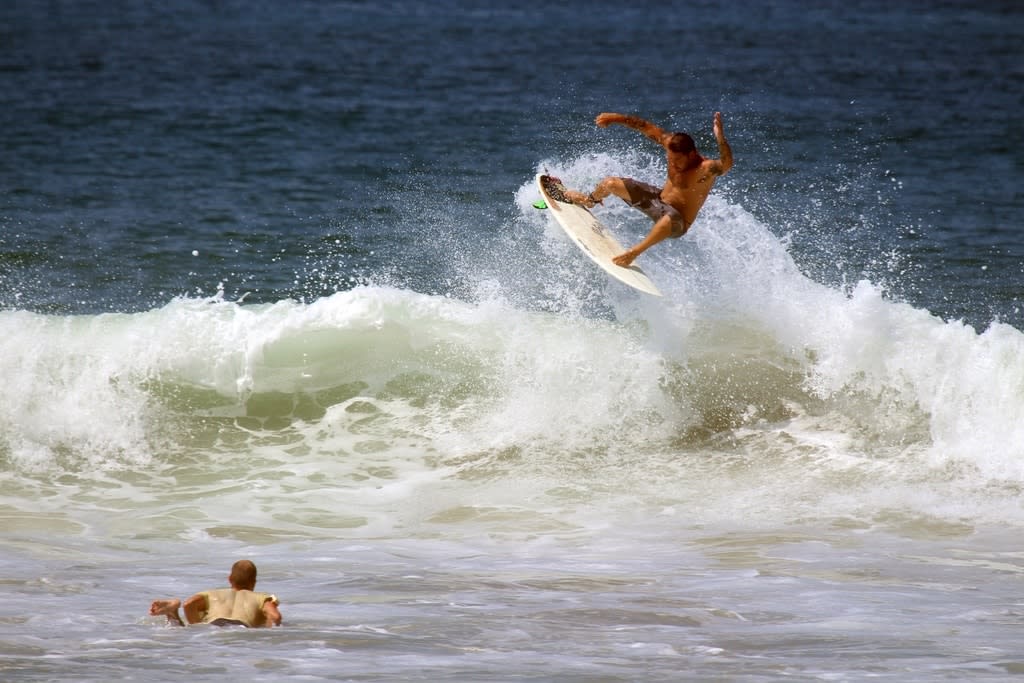Surfing and its origins

The origins of surfing
Discover the evolution of surfing over time ... What are the origins of surfing? Where does this ancient practice come from? Who were the pioneers? We've traced the history with the explorers and the first surfers...
Discovering surfing in Polynesia
The origins of surfing lie in the Pacific between Tahiti and Hawaii, when travelogues depict natives lying on large pieces of wood to "catch" waves.
The story goes that James Cook first saw a surfer on his arrival in the Sandwich Islands, the ancient name for the Hawaiian archipelago. It was his lieutenant, James King, who described in a ship's log the surfing he had observed at Kealakekua Bay on the Big Island ofHawaii. Originally, surfing was a rite of passage for tribal leaders who proved their worth by battling the elements on a wooden or tree bark board that weighed about 50 kilograms. At that time, in Polynesia, surfing was a way to advance socially and to be recognised in the community.
"We saw ten or twelve Indians swimming for their own pleasure; when the waves broke near them, they dived underneath and appeared on the other side with inconceivable skill and ease. What made this spectacle still more amusing was that the swimmers seized the stern of an old dug-out canoe and swam it ahead of them to a considerable distance out to sea; Then two or three of these Indians got on it, and turning the square end against the wave, were driven ashore with incredible rapidity, and sometimes even to the shore; usually the wave broke over them before they were half way, so they dived and got up on the other side, still holding the remainder of the canoe. "Extract from James Cook's logbook, after his passage in Polynesia in 1769, during his first round-the-world voyage (1768-1771)
The impact of colonisation on surfing
With American colonisation, the ancestral practice and rituals of surfing were gradually lost, notably because of the English missionaries who arrived in the twilight of the 18th century and considered these practices to be anti-moral, dictating modesty and rigour to the islanders. Shamelessness was forbidden and surfing was banned. The Polynesians were no longer allowed to surf half-naked on a log!
Nothing more for hundreds of years until the 1960s, when a passing American, before leaving, left a few planks as an offering... A priceless gift.
The surfing renaissance in the 1960s
In the 1900s, Australian surfers, looking for spots, were accompanied by Tahitians who showed them where the lefts and rights were on the reef or on the beach breaks. When they left, they left their boards with their Polynesian guides.
Also, Duke Kahanamoku, Olympic swimming champion, decided to revive this emblematic sport by taking it across the oceans! He has multiplied surfing demonstrations in California and Australia, which have now become essential surfing destinations.
The passion and beauty of surfing has inspired the world and in particular Jack London, the adventure writer, who did much to democratise the sport for the general public.
Roland Leboucher, one of the pioneers of the surfing renaissance in Tahiti, told David Michel, a journalist with L'Equipe. "With my cousins, we got a board, we started in the moss, then little by little, we progressed, inspired by the great Hawaiian surfers we saw in the magazines. In 1969, the first surfing championship was organised in Papara, and it was Roland Leboucher who was crowned champion that year.
The golden age of surfing
Some time later, when the first World Surfing Championships were held in Australia, some of the teams travelled by sailboat to Tahiti. The foreign surfers asked for advice from the locals who knew the best about the surfing spots when they arrived. In exchange, they accompanied them to the spots and discovered the first pleasures: as there was no leash attached to the ankles of the wave hunters, as soon as a surfer fell and the board came back to the shore, the young Tahitians rushed to bring it back to the sea. When the visitors left, they too abandoned some boards.
With the democratization of surfing around the world came technological developments that allowed for the development of lighter and more streamlined surfboards for a better riding experience. Fins were introduced on boards and new materials such as polystyrene and fiberglass were used to explode the public's interest in surfing.
Surfing comes to France
It was in the 1950s that the filmmaker Pierre Viertel introduced surfing to the French ... in Biarritz ! This city in the southwest that breathes the surf spirit was the cradle of the practice in France. And it's no surprise that it was the waves of the Atlantic Ocean that made Pierre Viertel want to have a board imported from California to take full advantage of it. Surfing quickly spread along the Basque Coast and in particular on the today ultra-famous spot of the Côte des Basques. France is full of very good spots for surfing, for all levels of practice, and all types of practice. France is a must for many surfing competitions such as the Quicksilver Pro and Roxy Pro for example.